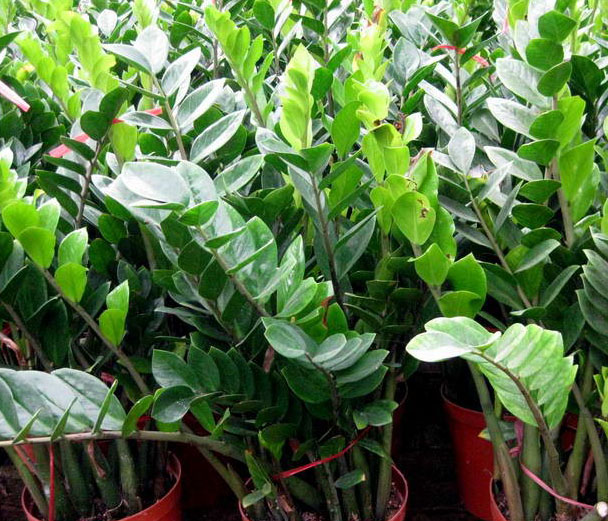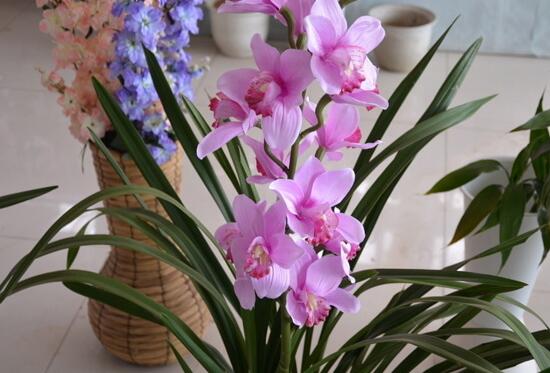Techniques and methods of cutting Flowers in Water
Water containers-just use ordinary cans. Bottle □ uses a foam plug with holes to secure the cuttings. In the growing season, take the sturdy branches of the same year or year, about 3 nodes, keep 2-4 leaves in the upper part of the branch, cut the lower end obliquely into a horseshoe shape, and then insert it into a container containing water, with a depth of 1 cm 2-2 cm 3, and the water temperature should be kept at 20 °C-25 °C, and the water should be changed twice a week. Usually put the container in a place with bright scattered light, sooner or later can receive light, but to avoid too strong light. When the new root grows to about 3 cm, it can be transplanted into the basin. At the beginning-period of time to maintain a high humidity, let it have an adaptation process, which is conducive to improve the survival rate of transplantation. Suitable for cutting in the water, such as gardenia, oleander, rubber tree, peach leaf coral, evergreen, tortoise back bamboo, hanging orchid, duck toe grass, ivy, four seasons begonia, primrose, fig, leaf change, rose, Ruixiang, Michelia, dragon blood tree, mulberry, pomegranate, dahlia, dry umbrella grass, chrysanthemum, golden bract, colored leaf grass, marigold and so on.

Management methods after cutting of Flowers
First, temperature. Soft branch cuttings are generally suitable for cutting at 20 ℃-25 ℃, while plants that like high temperature take root more quickly at more than 25 ℃. For the flowers and trees which are difficult to root, if the ground temperature is 20 ℃-40 ℃ higher than the air temperature, it can promote rooting.
Second, humidity and moisture. Soft wood cutting requires high environmental humidity, which needs to be kept above 80%, so it is necessary to spray into the bed frequently, and plastic film is often used to build arch shed for moisturizing. Usually watering can be more appropriate before the formation of callus, and it should be reduced later.
Third, light. A certain amount of light can promote the rooting of tender wood cuttings with leaves. However, the sun is strong in the growing season, so it is necessary to shade and maintain a light transmittance of about 50%. Cloudy days can not be covered, after taking root, you should gradually remove the shade.
Fourth, air. Cuttings will suffocate and rot because the substrate is too wet and there is not enough air in the substrate. Therefore, the selection of matrix to be loose, good drainage, and to spray the right amount of water, when the temperature is high at noon, to open part of the film for ventilation.
After the cuttings take root, they should be transplanted as soon as possible, otherwise the leaves of cuttings will become yellow and old due to the lack of nutrients in the substrate, which will affect the growth and development in the future.
Techniques and methods of cutting Flowers in Water
Ordinary canned bottles are generally used for water containers. The bottle mouth uses a foam plug with a hole to secure the cuttings.
In the growing season, take the sturdy branches of the current year or biennial, about 3 nodes, keep 2-4 leaves in the upper part of the branch, cut the lower end obliquely into a horseshoe shape, and then insert it into a container containing water. The depth is 1 ℃ 2-2 ℃, and the water temperature should be kept at 20 ppm-25 ppm. Change the water twice a week. Usually put the container in a place with bright scattered light, sooner or later can receive light, but to avoid too strong light.
When the new root grows to about 3 cm, it can be transplanted into the basin. At the beginning of a period of time to maintain a high humidity, let it have an adaptation process, which is conducive to improve the survival rate of transplantation. Suitable for cutting in the water, such as gardenia, oleander, rubber tree, peach leaf coral, evergreen, tortoise back bamboo, hanging orchid, duck toe grass, ivy, four seasons begonia, primrose, fig, variable leaf wood, rose, Ruixiang, Michelia, dragon blood tree, mulberry, pomegranate, dahlia, dry umbrella grass, chrysanthemum, golden bract, colored leaf grass, marigold and so on.
How do flowers propagate by cutting? Detailed explanation of the basic methods of Flower Cuttage Propagation
In the last article, we talked about the striping propagation of flowers. Experienced flower friends all know that in addition to striping propagation, cutting is also a very common way of flower reproduction. Cuttings are cuttings, cutting the stems, roots, leaves and buds of flowers, and inserting them into soil or soaking in water. After taking root, they can be planted and grow into new plants, but the conditions for cutting different flowers are different. Let's take a look at the detailed explanation of the flower cutting method with the editor of Huinong Network.
1. Cutting types
There are three kinds of cuttings: leaf cuttings, stem cuttings and root cuttings, which are classified according to the maturity of cuttings and flower organs. In addition, according to the different cutting period and methods, it can also be divided into split cutting, heel cutting and so on.
(1) Leaf cutting
A flower that can be inserted into leaves, having a stout petiole, veins, or thick leaves. The leaves inserted into the leaves should be fully developed and are generally carried out in the breeding bed for the purpose of effect. Leaf cuttings are divided into whole leaf cuttings, leaf cuttings and bud cuttings.
(2) Stem cutting
There is no limit to the location, depending on the season and species, in order to survive, you can cover the plastic shed for heat preservation or shade. Stem cutting is divided into soft wood cuttings, semi-soft wood cuttings and hardwood cuttings.
(3) Root insertion
Some perennial flowers can produce adventitious buds from their roots to form young plants, which is suitable for root propagation. The roots of this kind of flowers are very thick, not less than 2mm, and the roots of the same kind of flowers are thicker and older are easy to survive. It can be carried out in early spring or late autumn, or dig up the mother plant in autumn, store the root system for the winter, and then cut again in spring next year.
2. The key to survival
In order to ensure the survival of cuttings, we must pay attention to the following key issues.
(1) selection and treatment of cuttings
The branches of cuttings should be healthy, the cuttings of young cuttings should be cut immediately after harvest, the succulent plants should be cut and hung in a ventilated place for a few days, and the cut should be dried and then cutted. in order to prevent decay, you can barbecue the incision over a low fire, or dip some freshly burnt plant ash in the cut.
(2) the temperature of cutting.
The best cutting temperature is 20: 25 ℃. Too low and too high temperature will affect growth. Therefore, if the temperature can be controlled, the four seasons can be cut. Under natural conditions, it is best to choose spring and autumn.
(3) humidity of cuttings.
The cutting substrate was kept in a moist state. And to ensure the humidity of the air, such as covering plastic film, but to be ventilated.
The above is the detailed explanation of the basic methods of flower cutting arranged by Huinong net. Have you learned it?
- Prev

Introduction to the Culture method of Golden Tree
The cultivation method of Artemisia mandshurica is relatively simple, and its leaves are arranged neatly like a string of copper coins. It is a popular indoor foliage plant in recent years. Artemisia mandshurica is a perennial evergreen herb with a height of 50 to 100 cm and large tubers underground.
- Next

When does the cymbidium blossom? how to raise the orchid after the orchid blossoms / bloom in October
For Cymbidium, flower friends should be no stranger, it is a hybrid variety of orchids, with large flowers and bright colors, deeply welcomed and loved by the broad masses of people. In life, there are many people who raise Cymbidium, and they all look forward to its flowering. When will Cymbidium blossom?
Related
- Fuxing push coffee new agricultural production and marketing class: lack of small-scale processing plants
- Jujube rice field leisure farm deep ploughing Yilan for five years to create a space for organic food and play
- Nongyu Farm-A trial of organic papaya for brave women with advanced technology
- Four points for attention in the prevention and control of diseases and insect pests of edible fungi
- How to add nutrient solution to Edible Fungi
- Is there any good way to control edible fungus mites?
- Open Inoculation Technology of Edible Fungi
- Is there any clever way to use fertilizer for edible fungus in winter?
- What agents are used to kill the pathogens of edible fungi in the mushroom shed?
- Rapid drying of Edible Fungi

